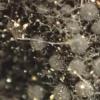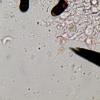
22-02-2020 16:41
 Robin Isaksson
Robin Isaksson
I wonder if this one is Hysterobrevium constrictum

23-02-2020 19:32
Bonsoir, Roche-à-Frêne, Belgique, s/tige morte

23-02-2020 19:28
Bonjour à tous, Roche-à-Frêne, Belgique, s/tig

23-02-2020 15:28
Hi forum,I am searching for the following paper:Be

16-03-2018 09:37
Gilbert MOYNEHabitat : sur rameau mort aérien de gui (Viscum a

20-01-2020 18:55
 Andgelo Mombert
Andgelo Mombert
Bonsoir, Un petit discomycète vert noirâtre mes
 Bonjour à tous;
Bonjour à tous;Lasiosphaeria sur écorce de Fagus en Hétraie-Chénaie xérophile versant sud.
J'ai lu que ce genre était plutôt complexe.
La Clef de C. Lechat m'envoie dans la section A.3; Les périthèces sont couverts de soies; Je pensais qu'il pouvait s'agir d'autre chose qu'Echinosphaeria strigosa ? Les ascospores ( 30à 35 µ * 7 à 8 µ ) sont lisses, tri-septés, à extrémités "arrondies" (?);
Merci pour votre aide!


Very cordially!
Best regards.
Eric
Je possède le document que je mets en P.J., mais Chaetosphaerella phaeostroma n'y figure pas. Peux-tu m'envoyer la clé que tu utilises stp ?
Merci d'avance.
Michel
michrimbaud@aol.com
Michel, tu confonds Chaetosphaeria et Chaetosphaerella. Ce sont deux genres distincts*.
Pour distinguer les deux Chaetosphaerella classiques et courants de nos contrées, tu peux t'appuyer sur Ellis & Ellis, ou alors retrouver des discussions à ce sujet sur ce forum en tapant le nom de genre dans le moteur de recherche.
Bien amicalement,
Alain
* Munk classait phaeostroma et fusispora dans le genre Chaetosphaeria. Mais c'était à une époque ancienne...
Je viens de voir tout ça dans Ellis.
Amicalement, bonne journée.
Michel

Désolé pour la non réponse mais j'étais absent cette semaine.
Je vois qu'Alain G t'as répondu donc tout va bien.
A Bientôt
Eric






 The genus Chaetosphaeria and its anamorphs
The genus Chaetosphaeria and its anamorphs